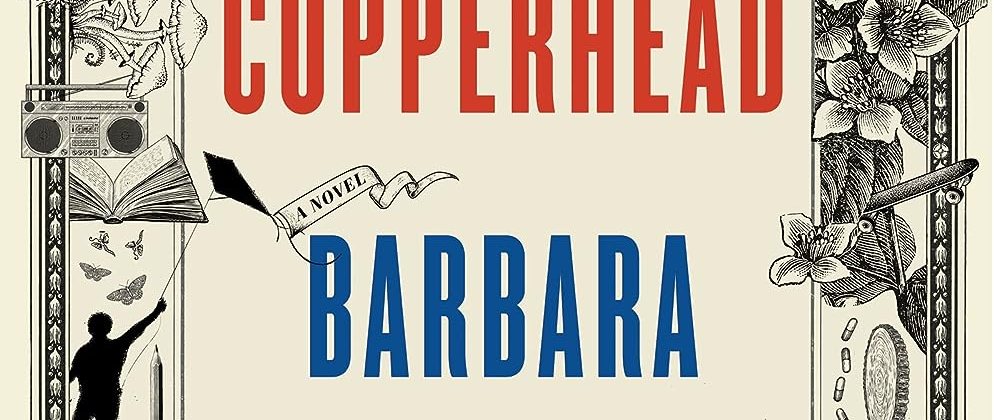

Last weekend, I read Barbara Kingsolver’s Pulitzer Prize winning novel, Demon Copperhead. I read it alongside Timothy Carney’s Alienated America: Why Some Places Thrive and Others Collapse and realized that these two books are largely telling the same story—more thoughts to come on Carney’s book tomorrow, by the way. It has aged remarkably well in the five years since publication and is a timely (re)read during this presidential primary season. Today, though, I want to comment on the echoes between Demon Copperhead and another classic coming-of-age novel—William Golding’s Lord of the Flies. Both novels pose an important question: where have all the grownups gone? The tragedies that unfold in both are powerful reminders that for children to be able to have a childhood, grownups—and especially parents—must do their part.
Kingsolver’s novel is a modern Appalachian retelling of Charles Dickens’s David Copperfield. Anyone who has read David Copperfield will readily recognize the many nods to that book in Kingsolver’s overall plot, and even in the names of many of the characters. In both novels, a boy is orphaned early, losing his father before his birth and his mother in elementary-school age. He is shuttled around from temporary home to temporary home, is mistreated and viciously abused by practically everyone around him, but ultimately survives (although mostly does not thrive) despite all odds, discovering a special gifting that will allow him to make a living as an adult (assuming he does manage to live that long).
In Kingsolver’s Appalachian recasting of the tale, nevertheless, we also find something distinctly modern in driving the tragedies: the rural opioid crisis and adjacent substance abuses. The many deaths that occur throughout the book are the result of a trifecta of very contemporary vices plaguing the poor in pockets of rural America—specifically, heavy drinking, modern illicit drugs, and prescription pain pills. All of these add up, furthermore, to the functional absence of grownups in the lives of children, leaving those kids to raise themselves the best they can (spoiler alert: this “best” isn’t very good).
Even if we leave drug abuses aside, what happens if children just raise themselves? Such is the dystopian experiment in Golding’s 1954 novel Lord of the Flies. A plane crash on an island leaves a bunch of kids trying to survive all on their own, without adults, while war (WWIII?) rages beyond the island. Survive they do, at least at first. But their initial efforts at organized self-government swiftly devolve into violence, factions, and all-around chaos, complete with a homegrown pagan cult and a helping of murder. These last two developments remind us that we all are spiritual beings. Absent healthy religious structures, people will resort to something else, more primordial and cruel. Healthy spiritual formation, we are reminded, requires healthy family life.
I kept thinking back to Golding’s pessimistic thought experiment as I was reading Kingsolver’s. No deserted island is necessary to replicate such a physical and spiritual unraveling of community in real life today—all one needs is a place characterized by cycles of dysfunction, generational trauma, and isolation from healthy relationships with parents and community organizations. Just how many people in one small community could really die so young of drug overdoses? How many young kids could ruin their own lives and those of others because they never got to be kids, and then didn’t live long enough to be become functional adults? And how many adults never grow up, but remain functional (or, really, dysfunctional) kids for all intents and purposes, utterly checked out from all responsibilities, focused on nothing but self-gratification?
Kingsolver may be writing fiction, but reading Carney side-by-side offered a grim reminder that this fiction is based on real life pockets of regions of America that are alienated from relationships and connections—the stories of people who are not connected to churches, organizations, functional family networks, etc. It is disconnected people who grow up angry, failed by family and society alike, and then (statistics grimly remind us) go on to continue the cycle. This story from early in Alienated America reads like an episode from Kingsolver’s novel:
“Heroin and pills,” one customer says from the video poker machine at Smitty’s, “that’s all Fayette County [PA] is. It’s a shame you can’t even walk down the street without seeing a needle.” A couple eating in the nearby booth pipe up to say they saw needles at the school bus stop where they drop off their kids. Fayette County, with a shockingly high 43 overdose deaths per 100,000 population in 2016, wasn’t even in the top ten in the state. The top overdose counties were coal counties…
There are very direct and immediately relevant political implications to the story Kingsolver is telling, and with the help of Alienated America, we will turn to those tomorrow.